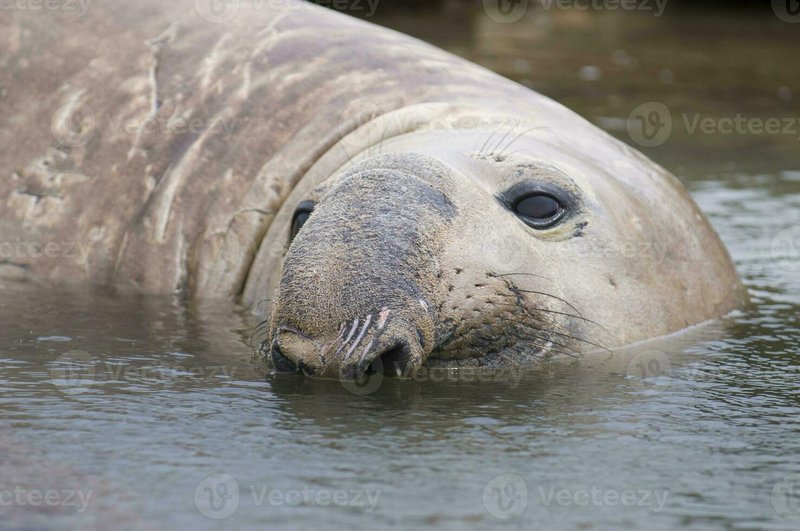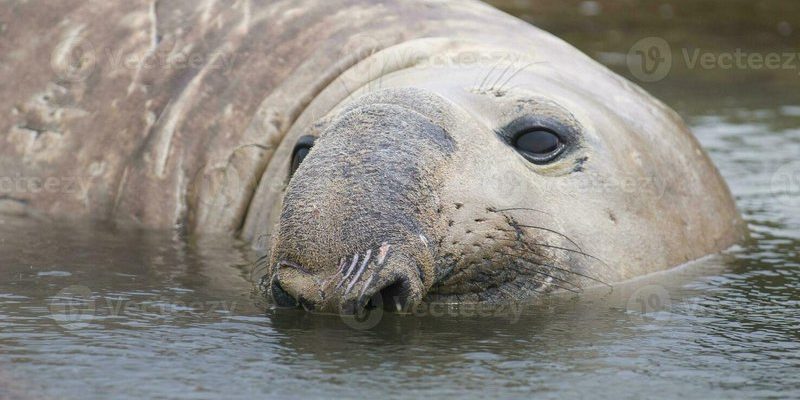
Imagine sitting by the shoreline, watching these impressive marine mammals bask in the sun. With their whiskers twitching and tusks glinting, walruses blend effortlessly into their surroundings. Understanding where walruses are found helps us appreciate their role in the environment and the challenges they face. So, let’s dive into the world of walruses and explore their habitats together!
The Habitat of Walruses
Walruses primarily occupy high-latitude regions in the Arctic and sub-Arctic. These ecosystems include not only icy waters but also areas rich in marine life, which is crucial for their diet. In fact, walruses thrive in places where ice and ocean meet, often using the ice as a platform to rest or give birth.
One of the primary habitats for walruses is the Bering Sea, encapsulated by the coastlines of Alaska and Russia. This area is teeming with the clams, snails, and other marine invertebrates that walruses love to munch on. These rich feeding grounds offer ample opportunities for foraging, which is essential for their survival.
Another notable habitat is the Laptev Sea in Russia, where walruses can be seen haul-out on sea ice. This is a vital behavior for them, as it allows them to rest and socialize. The surrounding waters provide a rich bounty, which makes it a fantastic locale for these marine giants.
Oceans and Seas: Walrus Habitats
When we think about where walruses are found, the oceans are a big part of the picture. Walruses predominantly inhabit the Arctic Ocean and the surrounding seas, such as the Chukchi Sea and the Beaufort Sea. These waters are not just chilling; they’re alive with a variety of marine species that walruses hunt for food.
The Chukchi Sea is a particular favorite among walruses. This area is rich in nutrients and supports a diverse ecosystem. Here, walruses can dive to the ocean floor in search of clams and other tasty treats. Honestly, it’s like an all-you-can-eat buffet for them!
Another crucial aspect of walrus habitats in the ocean is the seasonal ice pack. Walruses rely on these ice formations for resting and socializing. As the ice melts due to climate change, walruses have to swim longer distances to find suitable resting spots, which can be exhausting and dangerous.
Rivers: A Rare but Notable Habitat
While oceans are the primary homes of walruses, they can also be spotted in rivers, although this isn’t very common. There have been instances of walruses venturing into rivers in Alaska and northern Canada. You might be wondering why they would do this!
Sometimes, walruses travel into rivers to follow food sources or during their migration. For example, during the summer months, when the ice melts, they may head to rivers that provide access to food resources not found in open water. Rivers can also be a refuge from predators and a place to cool off.
However, walruses in rivers face challenges. The water can be warmer than their usual icy habitats, which can lead to overheating. This makes these river journeys risky for them, and they typically return to their preferred maritime environments as soon as they can.
Social Behavior and Walrus Aggregations
Walruses are social animals, often found in large groups called herds or pods. These gatherings can consist of hundreds or even thousands of individuals! You might see them piled together on ice floes, basking in the sun or socializing. They communicate through a mix of vocalizations, body language, and even their tusks.
Being part of a group offers various benefits. For one, it helps walruses protect themselves from predators. Larger groups can be intimidating to potential threats like polar bears or killer whales. Plus, when it comes to finding food, having friends around makes it easier to locate the best feeding spots.
Interestingly, walrus social behavior also varies by sex. Males tend to be more solitary and competitive, engaging in battles to establish dominance during mating season. On the other hand, females are known to gather in larger groups, especially while nursing their young, which fosters a sense of community and support.
Climate Change and Its Impact on Walruses
Climate change poses a significant threat to walrus habitats. With rising temperatures, the ice they depend on is melting at an alarming rate. This loss of ice not only impacts their resting and hunting grounds but also affects their social structures. Imagine relying on a sanctuary that slowly disappears.
As the ice retreats, walruses are forced to swim longer distances to find suitable areas, increasing their energy expenditure and leading to potential health issues. Moreover, with fewer ice platforms, younger walruses may be at greater risk of predation. The scramble for space can also lead to overcrowding on the remaining ice, which can be detrimental to their overall health.
Additionally, the melting ice affects their prey. As ocean temperatures rise, certain species of clams and other marine life that walruses feast on may dwindle or shift to new locations. This means walruses have to adapt to finding new food sources, a challenging task when already facing habitat loss.
Conservation Efforts and Future Prospects
The future of walruses is uncertain, but there are ongoing conservation efforts to protect their habitats and ensure their survival. Organizations and researchers are working tirelessly to monitor walrus populations and habitats.
They focus on creating marine protected areas where walruses can thrive without the interference of human activities. These safe havens provide walruses with spaces to forage, breed, and spend time with their young, all while helping to preserve their natural ecosystem.
Public awareness also plays a key role in walrus conservation. By educating communities about the impact of climate change and how it affects these majestic animals, people can take steps to promote preservation and sustainability. Every little action counts!
In conclusion, walruses are found primarily in the icy waters of the Arctic and occasionally in rivers, each habitat offering unique challenges and resources. By understanding where and how they live, we can better appreciate their importance to our planet and work towards ensuring a stable future for these fascinating creatures. So next time you think of walruses, remember that their homes are as dynamic and changing as the oceans themselves.

